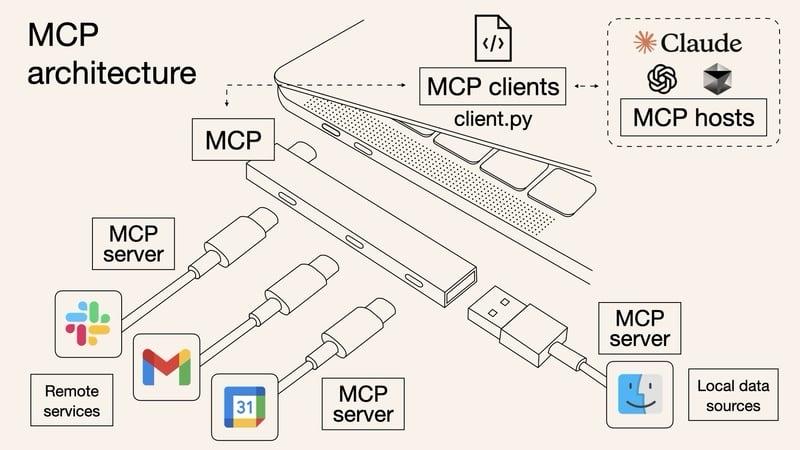Architecture
The Model Context Protocol (MCP) is an open standard that enables AI applications to securely connect to external data sources and tools through a client-server architecture.
In MCP:
- Servers expose resources (data), prompts (templates), and tools (functions) that AI models can access
- Clients (like Claude Desktop or IDEs) connect to these servers and make the capabilities available to AI models
- Communication happens through standardized JSON-RPC messages over various transports (stdio, HTTP, etc.)
This creates a universal way to plug any data source or tool into any AI application, replacing the need for custom integrations for each service.
Source: Architecture – Model Context Protocol
MCP & APIs
MCP is unlikely to replace APIs; rather, it will serve as a complementary layer tailored to AI-native needs. APIs – with their maturity, reliability, and established governance mechanisms- will continue to power mission-critical software-to-software transactions. MCP, by contrast, is designed specifically to bridge large language models, agents, and development environments with underlying resources and tools.
Its self-describing nature and uniform protocol reduce integration overhead and make systems more “model-friendly.” From an architectural perspective, MCP should be viewed as an adapter that exposes existing APIs in a way intelligible to LLMs, not as a wholesale substitute.

While some developers in agent-first ecosystems may choose MCP as the primary interface, the scale, security, and transactional guarantees of current API infrastructures ensure they will remain indispensable.
Conclusion: MCP will evolve as an AI-native complement that extends the utility of APIs rather than replacing them. Architecturally, it sits between the AI reasoning layer (models and agents) and the system-of-record layer (APIs, databases, and services), acting as a bridge or adapter. By making existing APIs more accessible to LLMs and agent-first systems, MCP enhances – not competes with – them. Its real strength lies in complementarity, not replacement.